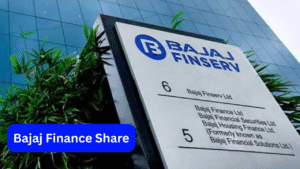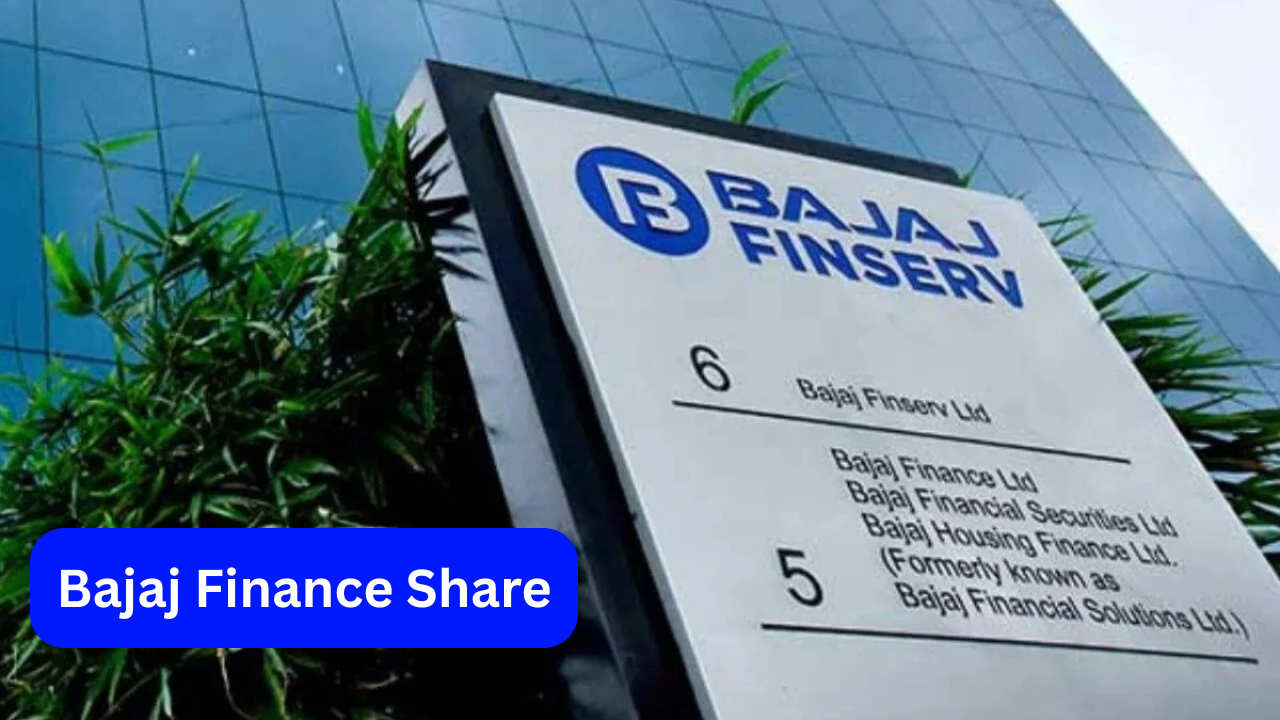Bajaj Finance Share: Bajaj Finance Limited (BSE: 500034, NSE: BAJFINANCE) stands as a giant in the Indian financial services sector More than just a stock, it is a compelling story of growth, innovation and strategic execution. For investors looking for a stake in India’s consumption story understanding Bajaj Finance is paramount. This comprehensive analysis delves deep into the company’s business model, financial health, growth drivers, inherent risks and future outlook to help you make your investment decision.
Company Overview: What is Bajaj Finance?
Bajaj Finance Limited (BFL) is the flagship lending entity of the prestigious Bajaj Finserv Group, part of the century-old Bajaj Conglomerate. Established in 1987, it has transformed from a traditional non-banking financial company (NBFC) to a diversified, technology-driven financial powerhouse. It is a constituent of the Nifty 50,
Bajaj Finance Share: Overview
| Aspect | Detail |
|---|---|
| Company Name | Bajaj Finance Limited |
| NSE Symbol | BAJFINANCE |
| BSE Code | 500034 |
| Industry | Non-Banking Financial Company (NBFC) |
| Key Business Segments | Consumer Loans, SME Finance, Rural Lending, Wealth Management |
| Strengths | Strong parentage, digital focus, diversified portfolio, extensive distribution network |
| Key Metric (AUM) | Over ₹ 3,20,000 crore (as of recent reports) |
| Key Risk | Regulatory changes, economic slowdown, premium valuation |
| Overall Outlook | Positive long-term growth prospects tied to India’s consumption story |
Business Model and Key Segments: How does Bajaj Finance make money?
Bajaj Finance’s strong business model is built on diversification across various high-growth lending areas. Its key revenue segments include:
1. Consumer Banking
This is the cornerstone of BFL’s operations, targeting retail customers. Key products include:
Retail Loans: Personal loans, home loans, and loan against property (LAP).
- Consumer Durable Financing: Famous “zero-cost EMI” schemes at partner retail stores for electronics and appliances.
- Automotive Loans: Financing for new and used cars, two-wheelers and three-wheelers.
- Lifestyle Finance: Loans for travel, jewelry, health, and other premium experiences.
- Credit Cards: A fast-growing segment with co-branded and standalone card offerings.
2. SME and Commercial Banking
This segment focuses on small and medium enterprises—the backbone of the Indian economy. It offers:
- Business loans for expansion and working capital.
- Loans against property for business purposes.
- Loans secured against securities.
- Supply chain financing for large corporates.
3. Rural Banking
BFL has a dedicated vertical to serve the underdeveloped rural market, offering financing for tractors, farm equipment and two-wheelers for farmers and rural entrepreneurs.
4. Deposits and Cross-Selling
A key strength is its ability to raise low-cost funds from the public through fixed deposits. Additionally, it cross-sells third-party financial products such as mutual funds and insurance, thereby generating fee-based income.

Bajaj Finance Share: Financial Performance and Key Metrics
Bajaj Finance has a long track record of delivering stellar financial results, which is a primary reason for its premium valuation.
- Assets Under Management (AUM): The company’s AUM has been growing at a compound annual growth rate (CAGR) of over 25-30% for several years in a row, recently crossing the ₹3 lakh crore mark.
- Profitability: Its net interest income (NII) and profit after tax (PAT) have shown strong growth, often outperforming the broader banking and financial sector.
- Asset Quality: The company has maintained excellent asset quality compared to many peers. Its gross non-performing assets (GNPA) and net NPA are generally kept under control, often below 2% and 1% respectively, demonstrating effective risk management.
Key Growth Drivers and Competitive Advantages
Several factors contribute to Bajaj Finance’s dominant position:
- Digital-First Approach: BFL has invested heavily in technology, which enables seamless digital onboarding, instant loan approvals and a superior customer experience through its app.
- Diversified Portfolio: Its presence in consumer, SME and rural finance allows it to tolerate a downturn in any one segment.
- Strong Brand and Parentage: The trust associated with the Bajaj name provides a significant advantage in acquiring customers and raising funds.
- Data-Driven Risk Management: The company uses advanced analytics and AI to underwrite customers, especially those with thin credit histories, allowing it to tap a wider market while controlling risk.
- Cross-Selling Prowess: Its huge existing customer base provides a fertile ground to cross-sell new products like credit cards, personal loans and investment products.
Challenges and Risks for Investors
Despite its strengths, potential investors should consider the following risks:
- Regulatory Risks: As an NBFC, it is subject to strict regulations from the Reserve Bank of India (RBI). Any changes in capital adequacy, provisioning, or lending norms could impact profitability.
- Intense Competition: The space is packed with competitors, including large private banks (HDFC Bank, ICICI Bank), fintech startups, and other NBFCs.
- Economic Cyclicality: Its business is linked to the Indian economy. A macroeconomic slowdown or rising unemployment could lead to a rise in credit costs.
- Valuation Concerns: Bajaj Finance stock has historically traded at premium valuations (high price-to-earnings ratio). This leaves little room for error; Any disappointment in earnings could lead to a sharp fall in the stock price.
Future outlook and growth prospects
The long-term outlook for Bajaj Finance remains positive, driven by:
- Formalisation of credit: As more Indians move from informal lending to formal credit structures, it is perfectly positioned to benefit from this.
- Underserved Market: Consumer finance penetration remains low in Tier 2, 3 cities and rural India, representing a huge growth opportunity.
- Digital Expansion: Continued innovation in digital lending and embedded finance (e.g., partnerships with e-commerce platforms) will be a key growth lever.
Conclusion: Is Bajaj Finance stock a good buy?
Bajaj Finance Share: Bajaj Finance is not just a stock; it is a well-oiled machine positioned to take advantage of India’s economic growth and rising consumption. Its proven business model, technological edge and strong management make it a high-quality compounder for long-term equity portfolios.
However, its premium valuation demands investors with a long-term horizon and high-risk appetite. It is less suitable for conservative, value-oriented investors seeking deep bargains.
